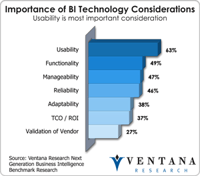LogiXML has been around for more than a decade, but has seen particularly robust growth in the past year. Recent announcements show the company with better than 100-percent year-over-year growth, driven by a 97 percent license renewal rate and new customer growth in SMB, departmental and OEM deployments. The 158-percent growth for the embedded analytics group for the fourth quarter on a year-over-year basis was particularly strong.
Read More
Topics:
Sales Performance,
IT Performance,
Operational Performance,
Analytics,
Business Analytics,
Business Intelligence,
Business Performance,
Information Applications,
agile,
LogiXML
In today’s economy, all companies are contending with a dynamic business environment characterized by volatile commodity prices and exchange rates, a shaky global financial system and slow growth in many countries. Many of them rely heavily on desktop spreadsheets to support the data collection and analysis related to their capital-asset planning. However, spreadsheets have inherent limitations that make them the wrong choice.
Read More
Topics:
Big Data,
Planning,
SAP,
Office of Finance,
Planview,
Budgeting,
contingency,
Operational Performance,
Business Performance,
Financial Performance,
IBM,
Oracle,
agile,
capital spending











